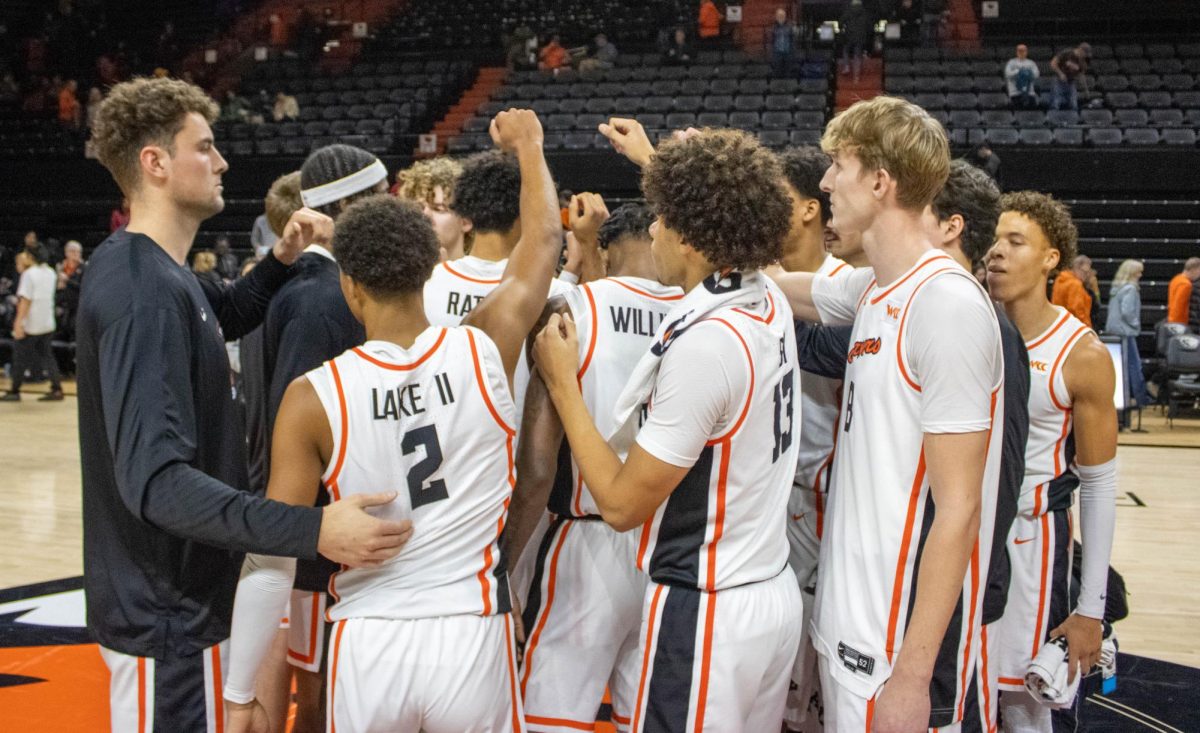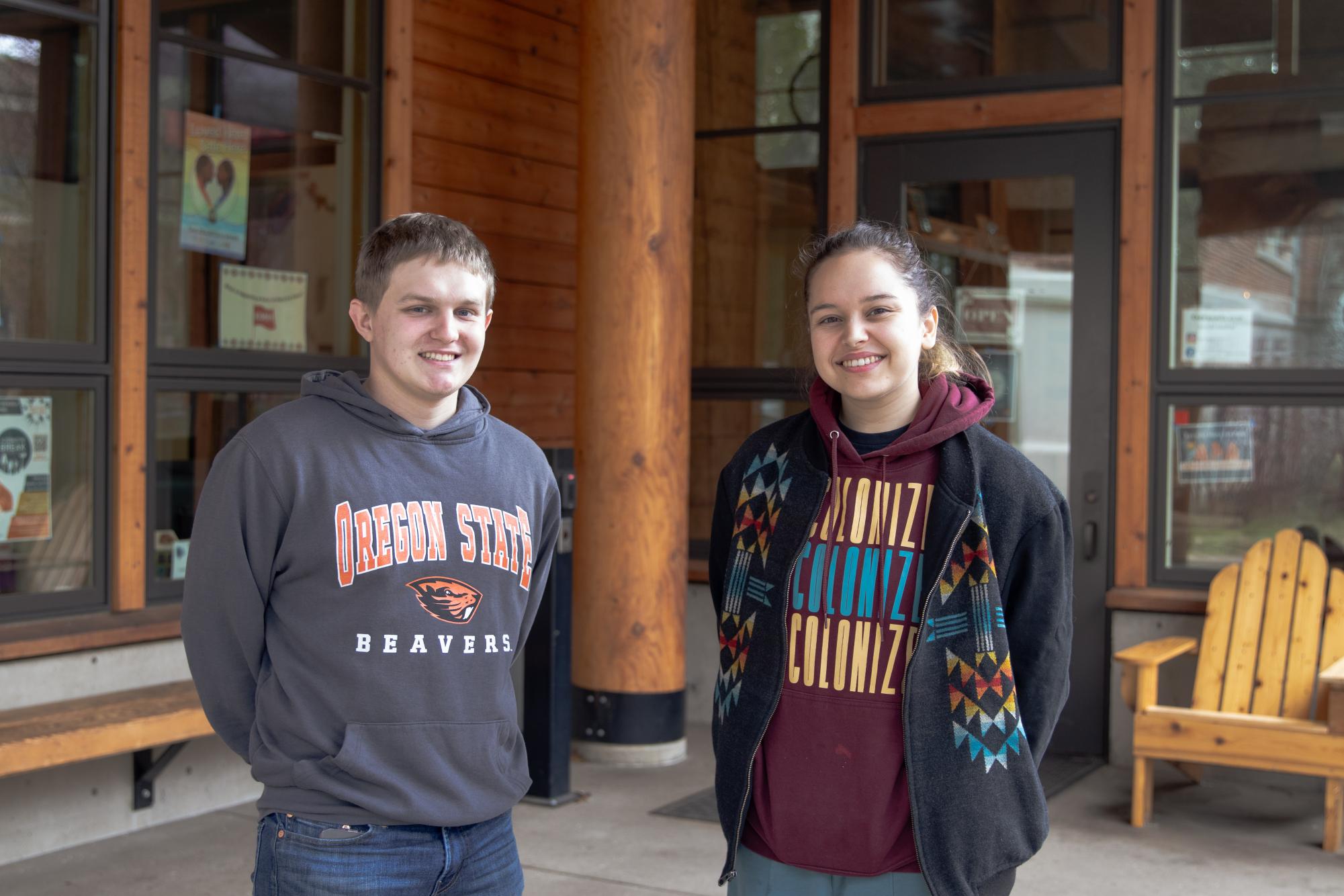This morning when you woke up, did you consider the ground beneath your feet? This land conceals untold stories. Unraveling Corvallis’ history reveals its roots—a journey of learning.
In the 1800s, when malaria was making its way through Oregon’s coastal region and the Willamette Valley, there came an increasing traffic of settlers with it. With the dawning of disease and the Indigenous population being reduced by more than 80%, settlers were able to bid for land.
Malaria had claimed most of the Kalapuya people between 1830 and 1833. The first settlers to arrive in what is Corvallis today were in the 1840s.
Established in the winter of 1847, Joseph Avery claimed 640 acres of land, which would then go on to become Corvallis.
Corvallis’ growth would soon come in the 1850s because there was a lot of land for people to claim and work with the industries being set up in wheat production and steamboat jobs that were growing on the Willamette River.
The Kalapuya people had several tribal territories. The territories were associated with the Willamette River.
Due to the different habitats in the region, the Kalapuya were able to hunt for various ranges of animals and vegetation.
Depending on the season the Kalapuya people would spend their days under minimal shelter for the warmer days or they would move to winter shelter homes when the weather would get colder.
The Donation Land Claim of 1850 added to Corvallis’ expansion alongside its agricultural industry allowing the commerce to thrive and bring in white settlers and immigrants all looking to set up homes and find work.
People from the southern states who were in favor of slavery had immigrated to Oregon and opened a college under their church, Methodist Episcopal Church. In 1868 the Oregon legislature appointed their small school, Corvallis College, as the state’s official agricultural college.
It was later seized in 1885 by the state due to failure to produce support for the land grant on which it was founded.
Expansion continued into 1873. The Army Corps of Engineers made a canal connecting the Willamette Falls and the Willamette River. No longer having to go through the falls, shippers could transport their goods more easily.
This also brought the birth of competing industries. In 1880 a railroad was built between Corvallis and Portland west of the river. This gave merchants more options on how they wanted their goods transported for sale.
With the growth of industries comes more opportunities and continued expansion. Corvallis was now entering the 1900s and automobiles have made their way into the city.
This prompted the modernization of Corvallis by paving streets and improving infrastructure like sewage.
After the Pearl Harbor attack in 1941, Camp Adair’s training base aided in the surplus in the local economy.
The state of Oregon found itself in a prosperous position postwar. Soldiers needed housing and this led to an influx of people coming to find jobs in the mills and woods that surrounded Corvallis. Nearly doubling its population.
Today, the city of Corvallis has just under 60,000 residents and its top employers are Oregon State University, Samaritan Health Services and Hewlett Packard, employing over 16,000 residents.
The Confederated Tribes of Grand Ronde Reservation was set up in June of 1857 sitting on 61,000 acres of land. No sooner than when the tribe was established did they start to lose land.
The federal government started implementing legislation that was meant to make tribal members transition into non-tribal citizens, so the government started dividing the Grand Ronde Reservation into allotments.
With the reduction of land and making the allotments private ownership, the land soon started falling into the hands of non-Native people.
The Grand Ronde Tribe lost its federal recognition in 1954. Congress passed the Western Oregon Termination Act. This left them landless and in a state of purgatory, trying to keep what was rightfully theirs.
Resilience soon pushed the tribal leaders as they started working on the “arduous” task of re-establishment.
Moses Mercier, a student at OSU studying anthropology and Indigenous studies is a member of the Confederate Tribes of Grand Ronde and a descendant of the Clackamas, Chinook, Takelma, Qua, Wasco and Iroquois peoples.
Mercier retold some of the stories of his grandfather who lived through the termination and of his father who was born after it was implemented.
“(My grandfather) had to go through (termination) and during that time you’re discriminated heavily against for being Native. It wasn’t safe especially when you didn’t have some of the protections that come with federal recognition,” Mercier said.
Mercier speaks about how people had to separate from their homes and land because they could no longer afford to live there. This led to many feeling that they had lost parts of themselves.
This also led to a lot of tribal members questioning who they were if they did not have this recognized status.
Some also wanted to distance themselves from their identity, to avoid the hardship of being Indigenous with no rightful access to land, resources and protection.
“If you weren’t Native you weren’t going to be discriminated against,” Mercier said.
However, there remained interconnected families that continued to work and see that restoration would be done.
In November of 1983, their tenacity, persistence and hard work paid off when then-President Ronald Regan signed the Grand Ronde Restoration Act.
Today, resilience stays alive for the Kalapuya land and the people. OSU has an Indigenous Studies minor that students can take to learn more about Indigenous history.
The program takes the history of Indigenous people and refocuses their stories and voices to educate on issues, enhance the responsibilities to Indigenous knowledge and support the work of decolonization.
Maia Barnes, also studying in the Indigenous studies program at OSU is a member of the Crow Creek Sioux tribe of South Dakota. She encourages members of the community in Corvallis to get involved by visiting local museums or attending events with Indigenous-focused organizations.
Learning about Corvallis’ expansion and impact on a deeper understanding, as Barnes points out, is important, because even though she is Native and was born in Oregon, this is not her land.
“Being able to learn about whose land I grew up on and recenter Indigenous voices lead into the reclamation of land traditions and culture and celebration over land occupation,” Barnes said.
The establishment of Corvallis brought growth and opportunity for many people, today the town is home to the largest university in the state and home to thousands of people.
It was home to the Kalapuya people first, though. That legacy can be seen in their acts of resistance by finding ways to share their culture and stories through language, learning apps or visiting the reservation for a tour.
Every time your foot hits the ground in Corvallis remind yourself, this IS Kalapuyan land.













































































































